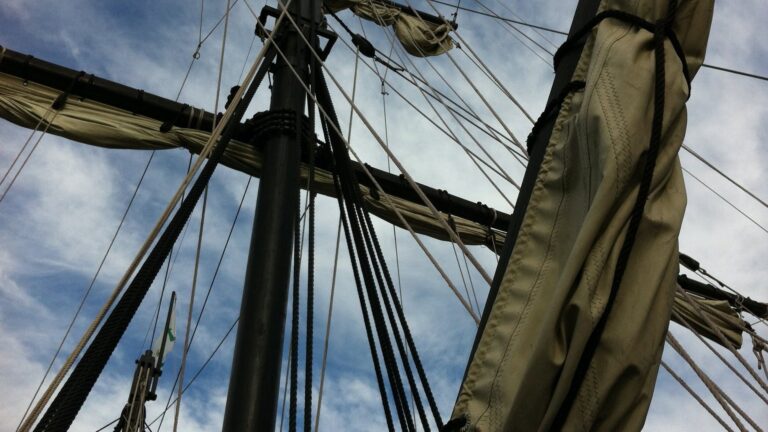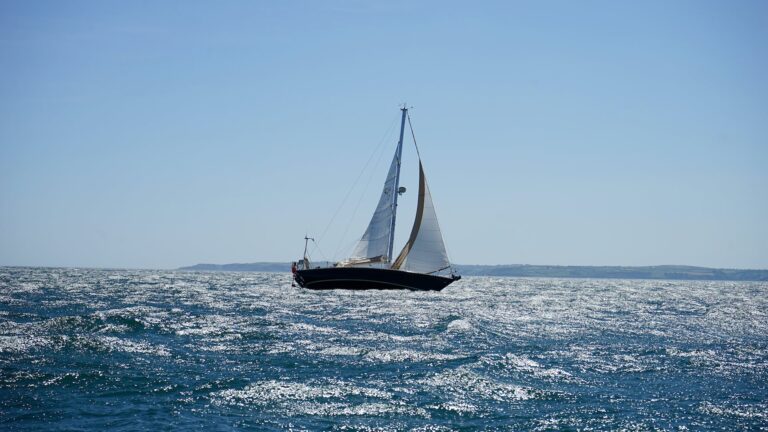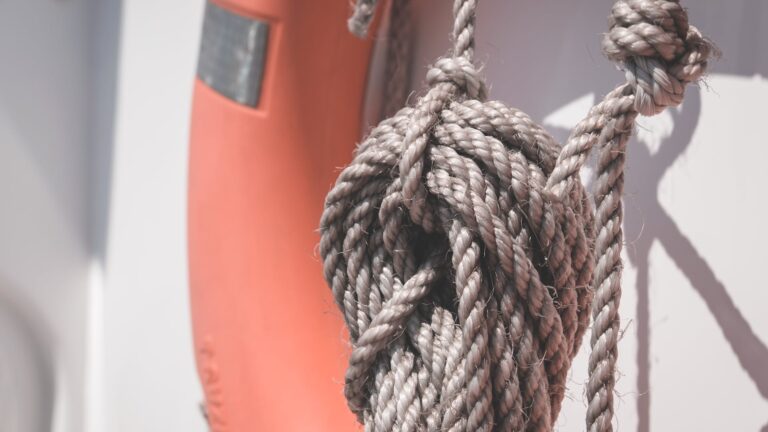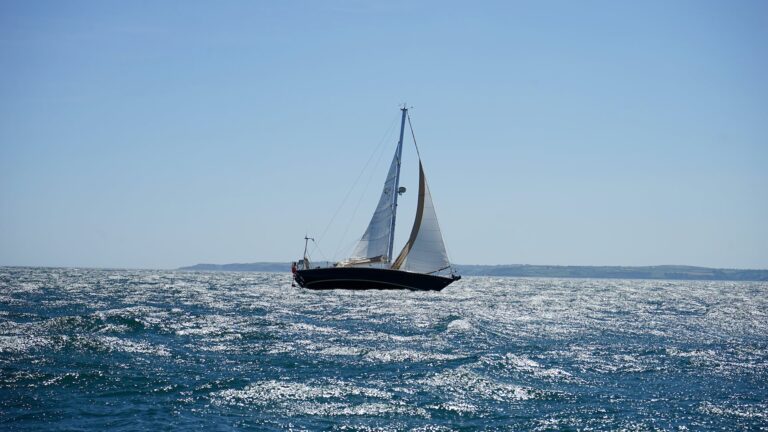What Is Too Windy For Sailing?
The wind can make or break a sailing trip, and every sailor should be aware of the risks associated with higher wind speeds before setting off on their journey. This article will explore what is considered too windy for sailing, factors to consider before heading out in strong winds, how to prepare the boat and crew, and potential hazards associated with high winds while sailing.
What To Consider Before Heading Out
Before heading out on a sailing trip, it’s important to consider the weather forecast and wind speeds in your area. It’s also wise to keep an eye on the local weather reports, as conditions can change quickly and unexpectedly at sea.
Additionally, if you plan on venturing far from shore, it’s important to ensure you have a reliable means of communication in case something goes wrong or unexpected conditions arise during your voyage.
How Wind Speed is Measured
Wind speed is measured using knots (kts), which is equal to 1 nautical mile (nm) per hour – roughly 1.15 miles per hour (mph). A light breeze would typically range from 4-7 kts while a moderate breeze would range from 8-12 kts, anything above 20 kts would be considered strong winds and potentially too much for many sailors depending on their experience level and type of boat they are using for their voyage.
What is Considered Too Much Wind for Sailing?
Generally speaking, 20 knots or more could be considered too much for sailing depending on a variety of factors including the type of boat being sailed, where you’re sailing, your experience level, etc.
If you’re in an area with gusts up to 30 – 32 knots then more experienced sailors may venture out but even then they should always be prepared for any situation that could arise due to unexpected weather patterns or other obstacles at sea that could make sailing difficult at higher speeds.
Factors To Consider Before Heading Out In Strong Winds
Before heading out in strong winds there are several key factors that need to be taken into consideration:
1) Type of Boat: Different types of boats have different levels of wind tolerance so it’s important to consider this when deciding whether or not it’s safe enough to go out in high winds, some boats are better suited than others when it comes to handling higher speeds so take this into account when deciding if it’s safe enough for you and your crew..
2) Weather Forecast: Knowing what kind of weather conditions you’ll encounter during your voyage will help determine if it’s safe enough to go sailing in higher winds, if thunderstorms are predicted then it’s best to avoid going out altogether as lightning strikes can cause serious damage both in terms of equipment failure and potential injury/loss of life..
3) Experience Level: More experienced sailors will often head out in up to 25 knots (gusting 30-32), however even then they should always ensure they are prepared for any unexpected circumstances that could arise due to changing weather patterns or other obstacles at sea..
Types Of Boats And Their Wind Tolerance
Different types of boats have different levels of wind tolerance so it’s important to consider this when deciding whether or not it’s safe enough go out in high winds, some boats like catamarans have more stability than monohulls which makes them better suited for handling higher speeds but even then there are still certain limits that must be taken into consideration.
Sailboats tend to perform best when there is no more than 15-20 knots, however some may be able handle up 30 knots with proper preparation and experience.
Additionally motorboats tend handle higher speeds better than sailboats as they have more power which allows them navigate through choppy waters easier but again this varies depending on the type boat being used..
The Effects Of Increased Wind On Different Parts Of The Ship
Higher winds can cause various parts of the ship such as masts, rigging, sails etc.,to come under stress which can lead equipment failure, additionally increased waves can cause the ship itself become unstable which can lead capsize if not handled properly.
It’s also important note that increased wind can cause fatigue amongst crew members due excessive vibrations caused by ships engines/propellers which why it’s always wise have someone aboard who has experience dealing with such circumstances..
How To Prepare The Boat For Higher Wind Speeds
Before heading out in higher winds there are few key steps that should take place order ensure proper preparation, these include checking mast/rigging/sails ensure everything secure and functioning properly as well checking all safety equipment onboard such life jackets/radios/emergency flares etc.
And ensuring they all working order just case something does go wrong during voyage.. Additionally checking fuel levels ensure there’s enough get home safely also essential part preparation process before setting off any voyage especially one involving higher winds.
Preparing Yourself And Your Crew For Stronger Winds
When preparing yourself and your crew for stronger winds its important remember following points:
1) Make sure everybody knows their roles onboard – every person needs understand their duties/responsibilities order avoid confusion during times need quick decision making, also having designated lookout helps spot any potential hazards while navigating choppy waters due increased visibility from greater heights onboard vessel..
2) Ensure everybody has proper safety equipment – life jackets are must no matter what type boat being sailed but additional items such radio/flares/first aid kit etc.,should also carried onboard just case emergency situation arises where help needed quickly respond..
3) Have an emergency plan – everyone needs understand plan action take case something does go wrong during voyage so everyone knows what do order remain safe no matter what situation arises while underway, this also helps reduce confusion amongst crew members as everyone will know how respond any given situation whether minor emergency major disaster occurs while away from shore…
Potential Hazards Of High Winds While Sailing
Although high winds can provide great conditions sail faster more efficiently they can also create hazards especially those who don’t have much experience operating vessels under such circumstances, some potential hazards include:
1) Loss Of Control – Due increased speed vessel may become harder handle particularly inexperienced sailors who may lack necessary skills manoeuvre under these conditions leading loss control potentially endangering lives those aboard vessel itself along anything else nearby waters..
2) Equipment Failure – Higher winds put greater strain parts ship such masts/rigging/sails etc.,which why its essential check these often ensure everything secure functioning properly avoid potential problems later down line due increased wear tear from choppy seas associated with stronger gusts wind speeds…
3) Risk Of Capsizing – Increased waves combined with greater wind speeds create significant risk capsizing ship especially smaller vessels those inexperienced operating them under these conditions leading potential injury loss life.
Conclusion
In conclusion sailing in strong winds requires great skill knowledge order remain safe successful during voyage, understanding what too much wind sailing what prepare yourself accordingly key staying safe while enjoying adventure open waters.
By knowing limits using common sense when deciding whether not head out higher speeds every sailor increase chances having awesome trip without putting themselves unnecessary danger.







